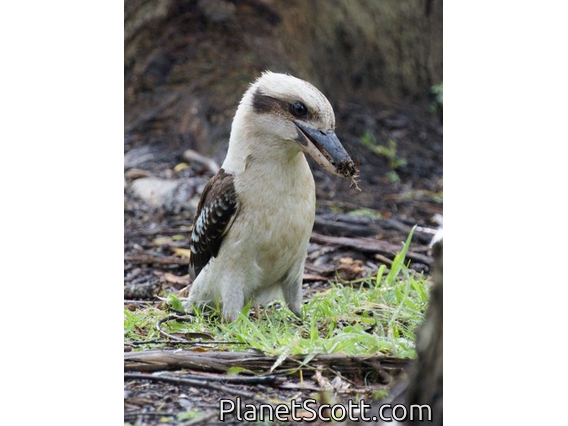Laughing Kookaburra (Dacelo novaeguineae)

Laughing Kookaburra (Dacelo novaeguineae)

Laughing Kookaburra (Dacelo novaeguineae)

Laughing Kookaburra (Dacelo novaeguineae)



×




Laughing Kookaburra (Dacelo novaeguineae)

Laughing Kookaburra (Dacelo novaeguineae)

Laughing Kookaburra (Dacelo novaeguineae)
About Laughing Kookaburra (Dacelo novaeguineae)
- Kingdom: Animals
- Phylum: Chordates
- Class: Birds
- Order: Kingfishers, Bee-eaters, Motmots
- Family: Kingfishers
The laughing kookaburra is a bird in the kingfisher subfamily Halcyoninae. It is a large robust kingfisher with a whitish head and a brown eye-stripe. The upperparts are mostly dark brown but there is a mottled light-blue patch on the wing coverts. The underparts are cream-white and the tail is barred with rufous and black. The plumage of the male and female birds is similar. The territorial call is a distinctive laugh that is often delivered by several birds at the same time, and is widely used as a stock sound effect in situations that involve a jungle setting.
Source: Wikipedia
Lifelists
Visits
-
2012-11-08
Daintree Village, Australia -
2012-11-09
Mount Lewis, Australia -
2012-11-10
Bloomfield Track, Australia -
2012-11-11
Lion's Den Roadhouse, Australia -
2012-11-11
Lakefield National Park, Australia -
2012-11-18
Katoomba - Blue Mountains, Australia -
2012-11-21
Royal National Park, Australia -
2012-11-22
Morton National Park, Australia -
-
2023-04-08
Dryandra Woodland, Australia -
-
-
2023-04-13
Margaret River, Australia -
-
2025-11-15
Yarra Bend Park, Australia -
2025-11-18
Kennett River, Australia






